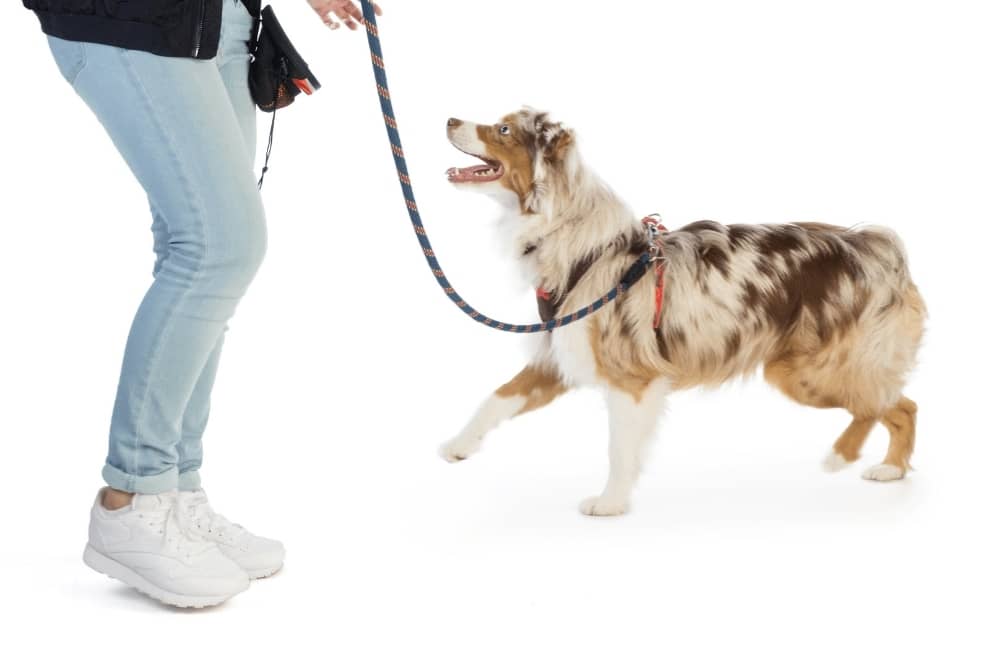One of the most common comparisons that dog lovers, owners, and enthusiasts make is whether it is better for your dog to have a harness or collar. It is one which divides opinion sharply, and in truth, the choice is often made due to personal preference, be that the dog owner’s, or the dog’s.
Harnesses and collars both have their advantages and disadvantages, so let’s examine a few of these and see if we can come to some kind of conclusion or recommendation. Bear in mind the specific question relates to walking with a collar or harness, and not their general suitability.
The Pros of Dog Collars
Despite what those who are fans of harnesses may tell you, most dog collars are comfortable when being worn. If they weren’t you literally have thousands, if not millions, of dogs going mental trying to remove them.
The fact is, they do not, and, in most cases, dogs probably have become oblivious to the fact they are even wearing a collar.
There is certainly a much greater choice in terms of materials and designs when it comes to collars, and therefore you are should find a collar that suits you and your dog.
There are also collars that have a specific purpose and these include collars used at dog shows, rolled collars, flat collars, head collars, and Martindale collars.
Collars are also more practical in that they can be more readily used to store dog ID tags, and even their license, if one is needed.
The Cons of Dog Collars
Dogs are great escape artists, and there is many a tale (no pun intended) of a dog owner chasing their dog down the street after it has managed to wriggle free of its collar. If you have a dog with a small head be aware as they are most likely to be able to escape collars.
Although there are lots of sizes available, for some reason collars for extremely small dogs are a lot more difficult to find than for other dog sizes.
For dogs that pull, collars can be a real problem, both for them and their owners. For the dog, there is a risk that if they are pulling, and their owner is pulling every bit as hard in the opposite direction, they could damage their trachea. This is the part of the throat where the collar is tightest when they pull.
Finally, there is the issue of collar getting caught in items, and this includes other dogs. By that we mean them getting caught in the jaws of other dogs when they play fight.
Another issue is when the dog is running, and its collar gets caught in a low branch or other item at the same height as the dog. This can cause a dog an extremely serious injury, and sadly there have also been fatalities due to this occurrence.
The Pros of Dog Harnesses
You are more likely to find a harness that fits your dog for a couple of reasons. The first is simply that they come in more size options, and second many of them can be adjusted.
This means that owners of either miniature dogs or giant dogs are likely to have a harness that fits their dog versus finding a collar that fits.
Harnesses come with more options than a collar with respect to where the leash is clipped, and how many locations they can be clipped to. This allows for greater control options for the owner than collars, where there is usually just one centrally located leash ring.
The way a harness is designed also means that a dog does not feel as inclined to follow its pulling instinct as it does when they wear a collar. This means training a dog to walk in a harness usually brings better results, and quicker results.
In terms of risks from injury due to getting caught, these are less than with a collar. This is mainly due to the fact that the way a harness is worn around its body means the dog’s neck or throat are less likely to be injured, nor is the dog at risk of hanging.
Cons of Dog Harnesses
Getting a dog to actually wear a harness can be more difficult especially when they have never worn one before. Even if the dog does accept wearing one, the owner then has to adjust the harness in multiple places to ensure that it fits properly versus a collar which you can see if it fits right away, and adjusting it is much easier.
Due to the fact that there are multiple points on the dog’s body where a harness is touching it, there is a greater risk that it may irritate the dog’s skin, with chaffing a common problem. Matting of their fur can also occur due to them wearing a harness.
Conclusion
Having weighed up the pros and cons of both collars and harnesses, when it comes to walking dogs, we believe harnesses provide greater control, make it easier to train the dog to walk properly, and are generally safer for when dogs are off the leash and running around.

